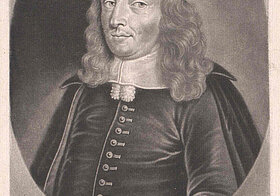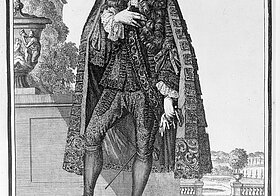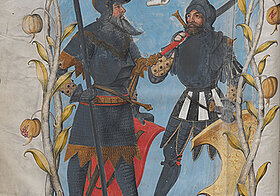Annual maintenance work will take place again this summer, which is why the reading rooms at the Heldenplatz location and in all collections will be closed from Friday, July 25, to Tuesday, August 5, 2025.
Due to the shutdown of the ordering system, no media orders can be accepted from Thursday, July 24, 2025, 4 p.m. to Tuesday, August 5, 2025, 4 p.m. The regular opening hours will then apply again from Wednesday, August 6, 2025.
The study room of the Albertina is closed from July 15 to August 15. During this time (except July 25 to August 5), media ordered from the Albertina collection will be transported twice a week (Monday and Thursday) to the reading rooms of the National Library on Heldenplatz and can be used there.
Starting August 1, 2025, the State Hall will open at 9 a.m.
Due to an event, the State Hall will be closed on August 4, 2025.
In 1663, the scholar Peter Lambeck (1628–1680), who came from Hamburg, was appointed library prefect and simultaneously became imperial “historiographer”. He managed to receive a regular yearly budget for the library from Emperor Leopold I and thus succeeded in substantially adding to its holdings. The most important event marking his term was the transfer of the Ambras library to Vienna. Since the Tyrolean line of the Habsburgs had died out in 1665, their precious manuscripts and prints kept at the Ambras chamber of curiosities were brought to Vienna by ship on the Inn and the Danube under Lambeck’s supervision: 583 manuscripts and nearly 1,500 printed works. A part of the works from Ambras that had been hidden and thus remained at the castle only arrived in Vienna much later, i.e. in 1806, including the famous Ambras Book of Heroes (Cod. Ser. n. 2663).
In his Commentarii, written between 1665 and 1679, Peter Lambeck described the library’s holdings, which already comprised some 100,000 volumes, in detail. The classification defined by him in the third volume was subsequently also kept for the newly built State Hall.
As is known from Lambeck’s "Audience Memoralia",Emperor Leopold I frequently visited the library in the company of members of his court and foreign guests. (ÖNB, Cod. 8011).



